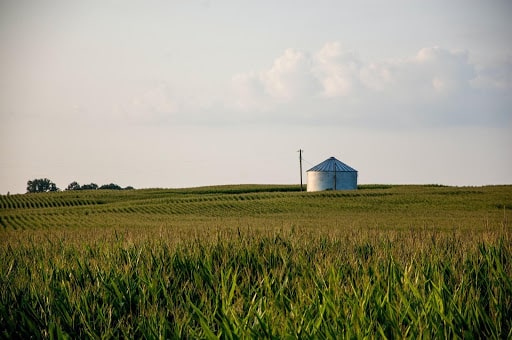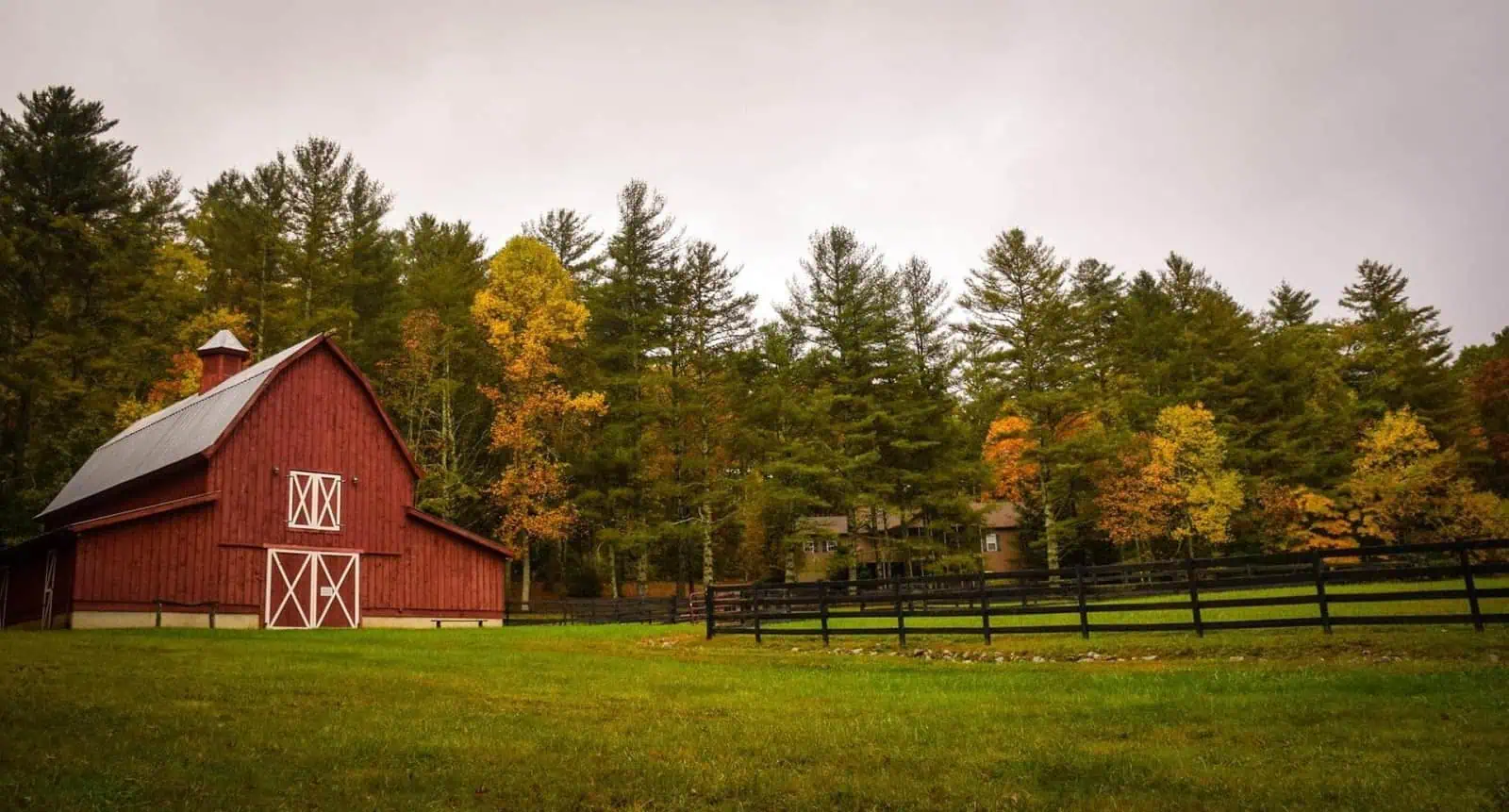What is Agricultural Zoning?
Also called agricultural preservation zoning, agricultural zoning is a land management tool used to encourage farming and discourage any non-agricultural uses that aren’t compatible with farm operations. This zoning promotes agricultural structures and limits the amount of non-farm uses like housing and anything else that competes for productive farmland.
Agricultural zoning:
- Limits suburban sprawl
- Encourages the maintenance of farmland and the agricultural community
- Redirects urban development to more appropriate places
- Limits the structures built on the land:
How is your property zoned? Get in touch with Millman National Land Services to get your Zoning Compliance Report and see what zoning regulations pertain to you and your property!
What Does Agricultural Zoning Allow?
Agricultural zoning ensures land is preserved for farming and related uses. It allows specific activities while limiting others to avoid conflicts. Below are some common allowances under agricultural zoning:
- Farming Activities: Growing crops, raising livestock, and aquaculture are fully permitted.
- Farm Building and Structures: Essential structures like barns, silos, and equipment storage facilities are allowed to support farm operations.
- Residences: Agricultural zoning often permits a house on agricultural land for owners or workers. Some zones also allow for temporary housing, like mobile homes for seasonal labor.
- Small Agribusinesses: Some areas allow small-scale businesses like farm stands, wineries, or agrotourism ventures, which enhance the farm’s income without disrupting agricultural operations.
- Environmental Conservation: Land can be used for wetlands, forests, or conservation areas, preserving natural habitats alongside farming.
Since zoning laws vary across regions, understanding local regulations is essential. If you’re unsure what’s permitted, contact Millman National Land Services to clarify your options.
10 Farm Structures That Can Be Built on Agricultural Land
Farmhouses
The farmhouse is the central hub of every residential farm, and it’s typically located near the barn and closer to the road than other structures. In some instances, multigenerational farms have more than one farmhouse, and the larger farms might have extra dwellings for the staff members.
Barns
When you picture a barn on agricultural land, you are probably thinking of the large traditional red barn most commonly associated with a farm. Depending on the farm’s purpose, they might have one or more different types of barns.
For example, dairy farms typically have larger barns with stalls for the cattle and a milking area, and horse farms have barns featuring large stalls for the horses and a tack room. Larger farms can have several barns on the land to house multiple types of livestock.
Poultry Coops
Poultry coops are a specific type of barn designed for raising chickens for either meat or eggs. All poultry coops provide chickens with plenty of space to roam around freely, but each coop style is designed to only house one type of fowl. Broiler barns are for fully growing chickens for consumption by focusing on feeding them, and layer barns maximize egg production through incorporating multilevel nests and perches.
Many modern poultry coops focus on giving the chickens a free-range environment that allows them access to outdoor areas for parts of their lifespan. Some poultry barns are even equipped with conveyor belts to make egg collection easier and more efficient.
Livestock Shelters
Livestock shelters are either permanent or portable structures that have less than four walls designed to improve the utilization of rangeland and pastureland while sheltering livestock from environmental factors. These structures are not considered buildings.
Livestock shelters have multiple purposes:
- Provide protection from heat, cold, wind, and snow
- Protect surface waters from pathogen and nutrient loading
- Protect wooded areas from nutrient deposition and erosion by offering livestock an alternative location for shade and shelter
- Improve the distribution of livestock to reduce over-used areas or and correct resource concerns
Loafing Sheds
Loafing sheds, or run-in sheds, are three-sided and typically built in a paddock or training area. These sheds give horses protection from the elements and offer them a safe, secure, and covered retreat. Typically, loafing sheds are in areas with less foot traffic because they are a place for horses to relax and unwind.
Since loafing sheds offer free access to horses, they can stay outside for longer than ones with only a horse stable, making them convenient for both the horse and owner.

Silos
Silos are structures that farmers use to protect and store their grain in bulk. While they can store other things, like coal, silos are typically used for grain; whatever material is stored in the silo is known as silage.
Farm silos are typically vertical and can be crafted out of various materials, including wood and concrete. They are a staple structure on agricultural land to keep a farmer’s grain safe to be sold or used in the future.
Equipment Storage
Many pieces of farming equipment can get stored in the fields, but most farmers prefer to store them in a separate facility, especially machinery, to protect them from the elements.
For agricultural landowners, their equipment is their livelihood, and protecting their tools is essential.
Equipment storage structures can be wooden, or metal and typically get built near the farmhouse and farm shop, making it easily accessible. For a farmer, protecting their equipment from weather and other interference drastically increases their useful lifespan.
Hay & Feed Storage
Hay and animal feed are fundamental necessities on every farm; it’s essential for the owner to be able to care for their livestock. Storing hay and feed in an agricultural structure lets farmers get more use out of it and reduces the risks of it spoiling.
Because hay presents a fire hazard, certain safety guidelines must be followed when building a feed storage structure on agricultural land.
Cold Storages
Cold storage facilities are crucial for many different farms to minimize post-harvest losses. For this reason, cold storage structures are allowed on agricultural land; they allow farm owners to suffer fewer losses.
Proper temperature-controlled cold storages give farmers the ability to get more out of the crops that grow on their land and are a staple for many farms regardless of their size.
Riding Arenas
Any agricultural landowner that raises horses knows the importance of giving them a daily workout to maintain their health and performance; that’s why riding arenas can get built on agricultural land. Riding arenas are a necessity for owners; riding outside each day isn’t always a possibility.
Building these structures on farmland gives horse owners the ability to take care of their animals in a safe, effective environment outside of the elements, and they eliminate some of the riding dangers.

Do You Want to Build on Agriculturally Zoned Land?
If you’re planning on building a new structure on your agriculturally zoned land, it’s important to understand the regulations surrounding it.
What if the structure you want to build isn’t on this list? Contact Millman National Land Services; we can help you understand your property’s zoning and find out what you can and can’t build on your agricultural property!
Related: All About Zoning Codes







